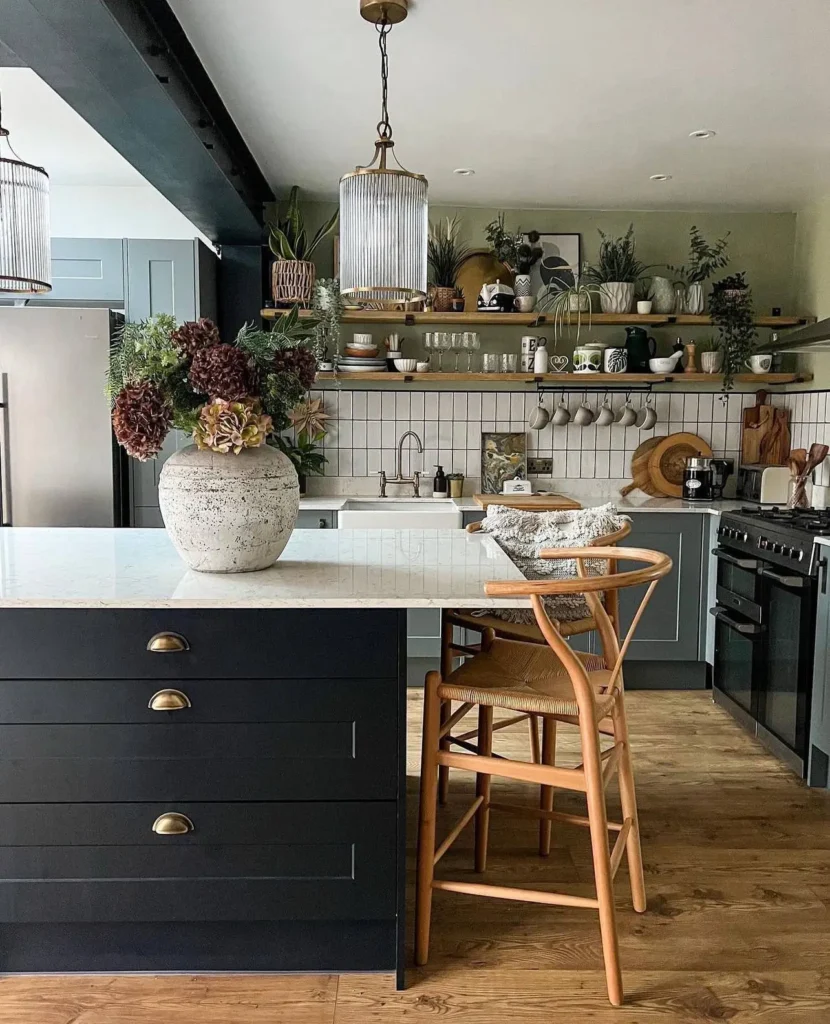
As remote work becomes a permanent fixture for many, creating a dedicated workspace has become a priority. A garden office offers the perfect solution for homeowners with available outdoor space.
Combining functionality with proximity to nature, a well-designed garden office can boost productivity while providing a peaceful environment for work. However, to maximize its potential, careful planning and thoughtful design are essential.
Garden Office Design
Whether you’re upgrading your garden shed or starting from scratch, designing a garden office is an exciting project that can transform your work-life balance. Here are the top tips to help you create a garden office that is both functional and comfortable.
1. Choose the Right Location for Your Garden Office

The location of your garden office significantly impacts its usability and comfort. Ideally, you should place your office in a quiet and accessible part of your garden, away from noise and distractions.
Consider the direction of natural light, and how to position your office to take advantage of morning sunlight, which can create a bright and energizing workspace. South-facing spots are great but might need shading solutions.
Additionally, think about proximity to your main home. A location that is close enough for convenience but far enough to maintain separation from household activities helps establish boundaries between work and personal life.
Also, choose a location that’s easy to reach, especially in bad weather. A clear path or stepping stones can make all the difference.
Ensure the ground where your office will be placed is level and stable to avoid complications during construction.
2. Lay the Groundwork: Foundations and Flooring

Let’s talk practicalities, your garden office needs a solid foundation. Skipping this step can lead to uneven floors or issues with dampness, which no one wants in their workspace.
Foundation Options:
- Concrete slabs: Durable and long-lasting, concrete is a popular choice for garden offices.
- Timber bases: These are eco-friendlier and quicker to install but may require more maintenance.
- Ground screws: Ideal for uneven terrain, they offer a modern and minimally invasive solution.
Once the foundation is sorted, consider your flooring:
- Laminate or vinyl: Durable, easy to clean, and available in stylish designs.
- Carpet tiles: Great for added warmth and comfort.
- Engineered wood: A premium option for a sleek and cozy feel.
3. Prioritize Insulation and Weatherproofing

A garden office is an all-season workspace, so insulation and weatherproofing are critical to maintaining comfort throughout the year. Proper insulation ensures the office remains warm in winter and cool in summer, reducing energy costs and providing a consistent work environment.
Insulation Tips:
- Double-glazed windows and insulated walls are excellent investments for this purpose, they can reduce energy costs and improve temperature regulation.
- Use high-quality insulation for walls, floors, and the roof to keep your office warm in winter and cool in summer.
- Weatherproofing protects the structure from rain, wind, and humidity, preserving its longevity. High-quality materials for the roof and exterior cladding are essential for keeping your garden office secure and durable.
Choosing materials that complement your garden’s aesthetics can also enhance its overall appearance.
For Climate Control:
- Heating: Consider a compact electric heater or underfloor heating for chilly days.
- Cooling: Portable fans or air-conditioning units can keep the summer heat at bay.
- Ventilation: Install vents or windows that open to ensure good airflow.
4. Incorporate Adequate Lighting and Ventilation

Lighting and ventilation play a key role in creating a productive and healthy workspace. Natural light not only reduces the need for artificial lighting but also boosts mood and energy levels.
Large windows, skylights, or strategically placed glass panels can flood the office with daylight, creating a bright and welcoming atmosphere. Make sure you include blinds or curtains to control glare on sunny days.
For artificial lighting, opt for a combination of overhead and task lighting. LED lights are energy-efficient and provide excellent illumination for focused work. Desk lamps with adjustable brightness are perfect for focused tasks or late-night sessions.
Ventilation is equally important; windows that open, air vents, or even a small ceiling fan can ensure a constant flow of fresh air, preventing the space from feeling stuffy.
5. Design a Layout That Maximizes Space

Even in small garden offices, a well-thought-out layout can make the space feel larger and more functional.
Start by considering your essential work equipment and how much space each item requires. A minimalist approach, with furniture that serves multiple purposes, helps to prevent clutter.
Built-in desks and shelving units can save space while providing ample storage for office supplies. If your work requires additional equipment, such as printers or drafting tables, plan the layout to ensure easy access without overcrowding the space.
A tidy, organized, and comfortable office promotes focus and efficiency.
6. Invest in High-Quality Furniture

Comfortable and ergonomic furniture is a must for a garden office. Long hours of work require a chair that supports your posture and prevents back strain.
Pair this with a desk that provides enough space for your computer, documents, and other essentials while maintaining a comfortable height.
If your garden office doubles as a meeting space, consider adding a small sofa or a couple of chairs for visitors. Durable, weather-resistant materials are recommended for furniture to ensure they withstand fluctuations in temperature and humidity.
7. Connect Your Office to Essential Utilities

To make your garden office truly functional, it must be connected to essential utilities, including electricity, internet, and possibly water.
Reliable power is crucial for operating devices, lighting, and heating or cooling systems. Work with a licensed electrician to install safe wiring and power outlets. Include plenty of outlets for your devices, and don’t forget USB ports for easy charging.
High-speed internet is a necessity for virtual meetings, research, and online communication. Depending on the distance from your home, this may involve boosting or extending your Wi-Fi network or installing a dedicated broadband connection.
If your work requires plumbing, such as for a sink or small kitchenette, plan the piping and water supply accordingly.
8. Personalize the Space for Comfort and Inspiration

Personal touches can transform a practical workspace into an inspiring environment.
- Choose colors that boost focus and calmness, like soft blues, greens, or neutral tones.
- Bring the outdoors in with greenery. Plants like peace lilies or succulents can improve air quality and add a calming vibe.
- Consider adding artwork, photos, or a pinboard to personalize the space.
- Soft furnishings like rugs, cushions, and curtains can make the office feel cozy and inviting.
- If space allows, a small bookshelf or a designated area for relaxation can provide a welcome break during the workday.
Creating a space that feels uniquely yours enhances satisfaction and makes the office a place you enjoy spending time in.
9. Explore Sustainable Building Options

As environmental awareness grows, many homeowners are choosing sustainable options for their garden offices. Choosing from a range of custom garden buildings that align with green principles allows you to create a workspace that is not only functional but also environmentally responsible.
Materials like reclaimed wood or bamboo offer eco-friendly alternatives that add character to the design. Solar panels can provide a renewable energy source, reducing your carbon footprint and saving on electricity costs. And water-saving fixtures and energy-efficient appliances further enhance sustainability.
10. Security Matters

A garden office often contains expensive equipment and sensitive documents, so security is crucial.
Security Tips:
- Install sturdy locks on doors and windows.
- Consider motion-sensor lights or a security camera for added peace of mind.
- Use blinds or curtains to keep valuables out of sight.
Protecting your workspace ensures you can focus on work without worry.
Building a garden office is an opportunity to create a dedicated workspace that meets your professional needs while providing the comfort and beauty of an outdoor setting. By carefully planning its location, insulation, layout, and design elements, you can ensure your office is both practical and inviting.
With attention to detail and the right resources, your garden office can become a haven of productivity and creativity. It will be a wonderful space that enhances your workday while blending seamlessly into your home environment.
Disclosure: Some of the links above are affiliate links, meaning that at no additional cost to you, I will receive a very small commission if you click through and make a purchase. These links help to pay the editorial costs of writing a blog. For more information, please read my full affiliate disclosure here.
I also use Artificial Intelligence Image generators to create some of my images. These are to show you examples of my ideas and inspiration when I cannot produce the real images myself.


